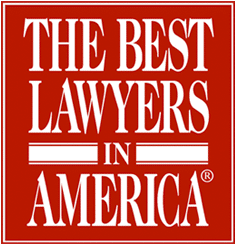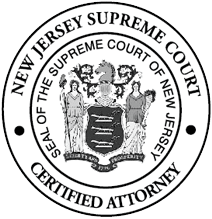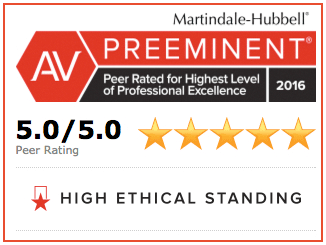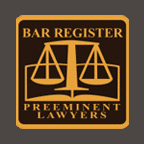Preparing and Using Demonstrative Evidence
PREPARING AND USING DEMONSTRATIVE EVIDENCE
Essential Elements of Evidence
March 3, 2007
Presented by: Andrew J. Rossetti, Esquire
“What the ear may hear, the eye can see.” Dehanes v. Rothman, 158 NL 90,96 (1999).
I. INTRODUCTION TO DEMONSTRATIVE EVIDENCE
In fact, demonstrative exhibits and aids provide the means “[t]o clarify, to dramatize and to emphasize” critical evidence in a case. Mary Quinn Cooper, The Use of Demonstrative Exhibits At Trial, 34 TULSA L.J. 567 (1999) (quoting Celia W. Childress, Persuasive Delivery In the Courtroom 619 (1995)). While not always offered into evidence, such visual presentations usually include maps, models, charts, diagrams, graphs, photographs, films, videotapes, and summaries. See Id.
In using demonstrative exhibits, the trial lawyer must ensure that the demonstrative exhibits are not only affordable and appropriate, but most importantly, are acceptable to the court. “By thinking through the evidence and using innovative ways to make the evidence not only clear, concise, and interesting, but also exciting and persuasive, attorneys using demonstrative exhibits can increase the possibility of a verdict in their favor.” Id. at 578.
II. WHY USE DEMONSTRATIVE EXHIBITS?
1) In fact, a demonstrative exhibit focuses the jury’s attention in a way oral testimony alone simply cannot.
a. Then, jurors are more likely to understand and retain information if attorneys engage more than one sense in communicating information.
2) Furthermore, demonstrative exhibits give attorneys added control over the presentation of the evidence.
3) Moreover, demonstrative exhibits may guide and assist an unintelligible witness.
4) Also, effectively using a demonstrative exhibit can throw opposing counsel off stride and bring the jury’s focus back to the evidence supporting a client’s position.
5) Lastly, demonstrative evidence can bring together various strands of evidence into a single piece that can assist the jury in seeing the big picture.
See Id. at 568-69.
III. OVERCOMING THE LEGAL HURDLES
Careful thinking is needed about issues relating to relevance, authentication and identification, substantive admissibility, and expert witness testimony before relying on a piece of demonstrative material. But, despite the preceding, the law on demonstrative evidence is not complicated. Moreover, it employs the same test as is used for admitting evidence by witness testimony. Therefore, relevant evidence is that which has a tendency in reason to prove or disprove a fact in issue. N.J .R.E. 401. Relevant evidence is admissible unless some exception such as undue prejudice applies. N.J.R.E. 402; State v. Dixon, 125 NL 223, 248-49 (1991). So, the basic inquiry is simply whether the proffered material will aid or assist the jury in its fact finding mission.
Furthermore, the most important point to remember in assessing demonstrative exhibits, whether offered into evidence or not, is the judge’s discretionary authority to admit or exclude the exhibit. In fact, the trial judge must balance the relevant demonstrative evidence against the prejudice of its admission. However, only if he is satisfied that the relevance outweighs the prejudice should the demonstrative evidence be admitted. Additionally, the trial judge’s discretion in performing this balancing function is wide. See United States v. Robinson. 560 F.2d 507 (2nd Cir. 1977), cert. denied, 435 U.S. 905.
A. R. 4:14-9(e)-Videotaped Deposition
In fact, an expert’s deposition taken pursuant to R. 4: 14-9(e), authorizes videotaping the deposition of an expert for use at trial. Moreover, a videotaped deposition authorized by R. 4: 14- 9 (e) may have a usage at trial in lieu of testimony whether or not the witness is available to testify.
However, an adversary cannot use a videotaped deposition over objection. “It would discourage the use of the [videotaped deposition] if an expert’s deposition could~ used substantively by the other side.” Genovesey. N.J. Transit RaiI Operations, Inc., 234 N.J. Super. 375, 381 (App. Div. 1989). Notwithstanding, the Court noted that there may be special circumstances justifying exceptions to the general rule but declined to articulate. See id.
1. Videotaped Deposition
In fact, the use of a videotaped deposition is permitted if it is relevant and authentic. See Blumberg v.Dornbusch, 139 N.J.Super. 433,438 (App. Div. 1976). So, the trial judge may use his sound discretion to determine whether a videotaped deposition is a fair, accurate, and undistorted representation of the witnesses’ deposition. See id. at 439.
B. Videotaped Testimony In Closing
It is within the trial court’s discretion to allow counsel to show portions of videotaped trial testimony and make comment thereon during summation. “[T]here should be no prohibition against showing actual portions of the videotape testimony.” Condella v. Cumberland Farms. Inc., 298 N.J. Super. 531,536 (1996). The Court noted that showing portions of videotaped testimony is: (1) at least as accurate, if not more accurate than reading portions of a written transcript; (2) more economical than obtaining a written transcript; and (3) more convenient than ordering a written transcript.
Pitfalls
However, there are a number of pitfalls that must be avoided when showing portions of a videotape including:
(1) portions of the videotape testimony shown during summation “should not be so lengthy as to constitute a second trial emphasizing only one litigant’s side of the case”.
(2) “[t]he court must exercise its discretion to limit the amount actually played by counsel during summation”; and
~ In Condella, the court permitted segments of the videotape to be shown that were no more than one or two minutes in length, and the total length was no more than ten minutes.
(3) “the court must take precautions to guard against the edited portions of the videotape misstating the evidence.”
~To eliminate this problem, “[t]he court, out of the jury’s presence should therefore view the proposed portions of the videotape testimony in open court on the record to make sure that it accurately reflects the evidence.”
(4) “[t]he court should have discretion to deny or limit the application to show portions of the videotape testimony if the time necessary to review the testimony would unduly delay plaintiff s closing, and thereby prejudice the defendant. ..”
Id. at 536-37. Phrased in another way, the court must “monitor what is shown and balance the benefits of showing the video against any possible prejudice to the other party.” Id. at 535.
Likewise, counsel may not replay videotaped portions of adversary counsel’s opening statement. This is because “[c]ounsel’s opening is not evidence.” Id. at 537.
C. Use of Blackboards/Large Charts (Graphic Aids) as Demonstrative Evidence
1. Use By Counsel During Closing
The Court generally approves the usage of blackboards/large charts at trial in explanation and specification. Moreover, the Court is subject to discretionary supervision of the trial court. In using a blackboard/large chart for purposes of argument, “anything which counsel has the right
to argue as a legitimate interpretation of or inference from the evidence, he is free, within the discretionary control of the trial court to write upon the blackboard[/large chart].” Cross v. Robert Lamb, 60 N.J.Super. 53,74-75 (App. Div. 1960). “Conversely, what counsel may not argue, he may not write on the board.” Id. For example, specific figures equating pain and suffering with specific amounts of money may not be written on any sort of graphic aid, for purposes of argument to the jury. See Id.; see also DeHanes, supra, 158 N.J. at 97 (“The value of pain and suffering is simply beyond the reach of science.”).
Moreover, there must be some evidentiary basis for figures placed on a blackboard/large chart. And, “[t]o minimize the possibility of prejudice the jury should be given to understand by the court as well as counsel that the figures written on the board [or chart] are not evidence.” Id.. Further, the blackboard/large chart should be in the jury’s view only during the argument in which counsel who has written the figures is discussing damages. See Id.at 76.
2. Use By Properly Qualified Experts
It is permissible to allow properly qualified experts to testify to the aggregate net sums of the economic losses that they have calculated. Moreover, it is also proper, subject to the same qualifications concerning cautioning the jury against uncritical acceptance, to allow experts to introduce into evidence the exhibits that they have prepared. See DeHanes. supra, 158 NJ.. at 103. Still, such evidence should be deemed inadmissible if the risk of undue prejudice substantially outweighs its probative value. See N.J .R.E. 403.
Furthermore, a jury’s common knowledge and experience is always available to help it assess whether an aggregate sum presented by counselor an expert represent fair and just compensation. See id. at 102. “Legitimate concerns arise only when the charts [or tables] are ‘an array of figures conveying a delusive impression of exactness in an area where a jury’s common sense is less available than usual to protect it.'” DeHanes, supra, 158 N.J. at 101 (quoting Herman Schwabe. Inc. v. United Shoe Machry. Corp., 297 F.2d 906, 912 (2nd Cir. 1962)). Moreover, it is wrong is for counsel to say that an expert’s evidence is undisputed.
3. Power To Admit Graphic Representations of Expert Testimony
In fact, a trial court has the power to admit into evidence a graphical representation of an expert’s testimony. See Fiorino v. Sears Roebuck and Co., 309 N.J.Super. 556, 570 (App. Div. 1998). Nonetheless, the trial judge’s power is discretionary in permitting the diagrams to go into evidence or in withholding them on the basis that the jury has seen and heard the expert, and the diagrams are merely cumulative evidence. See id. at 569. Realistically, sparing exercise of the power to admit graphical representations of expert testimony is preferable, and if it took place, should be done in a balanced fashion so that the opinions of an expert on one side of a case are not before the jury in graphical form, while the opinions from the opposing expert are left merely for the jury’s recollection. See id.
at 570.
Visual representation of an expert’s opinion may serve as an aid to the jury, unless the trial judge, from his unique perspective at trial, determines that admission will overemphasize the particular witnesses’ testimony. See Fried v. Aftec. Inc.. 246 N.J .Super. 245 (App. Div. 1991) (evidence in question was a visual representation of an expert’s opinion gleaned from his inspection of the books and records).
D. Admissibility of Motion Pictures
“[R]elevant motion pictures are generally admissible if properly authenticated.” Balian v. General Motors, 121 N.J. Super. 118, 125 (App. Div. 1972). Authentication of motion pictures ordinarily includes:
(1) evidence as to the circumstancesurrounding, thegofthefilm;
(2) the manner and circumstances surrounding the taking of the film;
(3) evidence in regard to the projection of the film; and
(4) testimony by a person present at the time the motion pictures took place that the pictures accurately depict the events as he saw them when they occurred.
Id. (citing 62 A.L.R.2d 686,692 (1958)).
E. Admissibility of Evidence of Experiments
In fact, admissibility of evidence concerning experiments or tests “would appear to be within the area of judicial discretion and turns on whether the experiment was conducted under conditions and circumstances similar to those actually occurring in the case.” Balian supra, 121 N.J. Super. at 126. Specifically, “such evidence is usually held competent if there is a substantial similarity between the conditions existing at the time of the occurrence complained of and when the experiments are made.” St. Paul Fire & Marine Ins. Co. v. Baltimore & O.R. Co., 195 N.E. 861 (Ohio Sup. Ct. 1935) (concerned with motion pictures of experiments). “[M]uch must be left to the discretion of the trial judge.” Id. at 864.
1. Admissibility of Motion Pictures of Experiments
A motion picture of an experiment is admissible when relevant and its probative value is not offset by undue prejudice, unfair surprise, undue consumption of trial time, or possible confusion of issues due to the introduction of collateral matters. See Balian, supra, 121 N.J. Super. at 127 (citing Stoelting v. Hauck, 32 N,J. 87 (1960)). The court also pointed out that despite a finding of substantial similarity between the experiment and the actual facts, a motion picture of an artificial reconstruction of an occurrence may be very weak evidence. See id. Therefore, the importance of the aforementioned off-setting factors cannot have enough emphasis.
In addition, cross-examination alone will not ordinarily provide a sufficient avenue of rebuttal with respect to motion picture evidence. See id. at 131. “Fundamental fairness dictates that party proposing to introduce into evidence motion pictures of a reconstructed event or a posed demonstration give notice thereof and opportunity to his adversary to monitor the experiment and the taking of the film.” Id.
2. Admissibility of Scientific Experiments
In fact, where there is a sufficient scientific basis to produce uniform and reasonably reliable results, the results of scientific tests are admissible. See Windmere. Inc. v. International Ins. Co., 105 N.J. 373 (1987) (citing Romano v. Kimmelman, 96 N.J. 66,80 (1984) (pertaining to criminal trials). Thus, in order to admit results of scientific tests, a demonstration that scientific technique has gained general acceptance within the scientific community shows the reliability of such evidence. Furthermore, upon showing that the scientific technique has gained general acceptance within the scientific community, courts will take judicial notice of given instrument’s reliability and will admit in evidence results of tests from such instrument without requiring further proof. See id. at 3 78- 79.
In fact, the general rule in New Jersey regarding the admissibility of scientific test results is that if the equipment or the methodology used is proven to have a high degree of scientific reliability, and if the testis performed or administered by qualified persons, the results will be admissible at trial. See State v. Chapman, 156 N.J.Super. 35, 38 (1978). Moreover, where statutory provisions or certain well-known procedures govern an experiment, the examiner must perform the examination in accordance with such guidelines. See Romano, supra, 96 N.J. at 41.
The reliability of scientific evidence must be weighed against prejudice in light of the context in which the evidence is offered, and where expert testimony is sufficiently reliable to assist the jury, it should be admitted despite some countervailing dangers. See Provide v. McLaughlin, 195 N.J.Super. 396, 402-03 (Law Div. 1984). Any dispute as to the results and interpretation of scientific testing goes to its weight, rather than to its admissibility, and the jury should determine it. See id. at 405.
a. Admissibility of Blood Alcohol Results
In fact, in its totality, the breathalyzer produces a scientifically accurate measure of a person’s blood alcohol level. See State v. Johnson, 42 N.J. 146 (1964). Results of breathalyzer tests shall generally be admissible in evidence when the breathalyzer instrument is in proper working order, a qualified operator administered it and used it in accordance with accepted procedures. See Romano, supra 96 N.J. at 82; see also Johnson, supra 42 N.J. at 171 (1964). Additionally, breathalyzer tests must be taken within a reasonable time after arrest. See State v. Tischio, 107 N.J. at 504, 522 (1987).
Furthermore, in the area of tests determining blood alcohol levels, the Court has consistently sought to eliminate the necessity for expert testimony. See id. at 517. However, “Ia]n extremely narrow and limited qualification as to the general admissibility in evidence of the results of the use of a breathalyzer instrument must be recognized in certain special situations raising a possibility of radio frequency interference.” Romano, supra 96 N.J. at 82.
3. The Jury Conducts Admissibility of Experiments or Demonstrations lnvolving Physical Evidence
“An experiment or demonstration is proper when conducted by the jury with the use of exhibits properly submitted to it for the purpose of testing the truth of statements made by witnesses or duplicating tests made by witnesses in open court.” Fiorino v. Sears Roebuck and Co., 309 N.J. Super. 556, 569 (App. Div. 1998) (quoting Geo. C. Christopher & Son. Inc. v. Kansas Paint & Color Co.. Inc.. 525 P.2d 626 (1974)). It is not an abuse of discretion to allow an exhibit into the jury room as long as any jury experimentation therewith was within the scope of the evidence presented at trial: “See id. (citing Commonwealth v. Pixel, 680 N.E.2d 101 (1997)).
However, controls must be placed upon the jury’s experimentation. Instructions limiting the jury’s use of physical evidence should be given, when necessary. For example, in Fiorino an allegedly defective leaf shredder and blower should not have been permitted in a jury room, in a products liability case, without appropriate limiting instructions. See id. at 569.
F. “Day In the Life” Videotape
In Ocasio v. Amtrak, 299 N.J.Super. 139, 155 (App. Div. 1997), a personal injury action, the trial court concluded that the risk of undue prejudice, confusion of issues, or misleading the jury did not substantially outweigh the probative value of the “day in the life” videotape. See also N.J .R.E. 403. There, the court found a “day in the life” videotape to be admissible if it assists the jury in resolving contested issues and because videotape was the only means by which a jury itself could observe the plaintiff’s then present condition and medical care being provided. See id..
G. Surveillance Films as Demonstrative Evidence
In fact, plaintiff can compel discovery of all films and disclosure by the investigator of all circumstances under which the films were taken; because of concerns of fabrication, misleading and unfair surprise at trial. “It is no more unlikely that a defendant may resort to chicanery in fabricating [films] of one alleged to be the plaintiff than it is that a plaintiff may indeed be a faker.” Jenkins v. Rainner, 69 N.J 50,57 (1976). However, defendant must have permission to depose the plaintiff again, limited to the issue of damages, before producing the films.
Subject to the discretion of the trial court, any demand for surveillance films should be accompanied by a consent to be deposed after the movies have been taken and before the films must be presented for the adversary’s examination, although there may be deviations from this general rule, subject to the trial judge’s discretion. See id. at 60.
H . Admission of Photographs
“Before ruling on the admissibility of photographs, it is incumbent upon the court to determine whether they accurately depict the subject at a time relevant to the issues involved in the litigation.” State v. Polito, 146 N.J. Super. 552,558 (App. Div. 1977). Where a party is unable to inspect the subject of the photograph, determining admissibility is a must in light of all of the circumstances, including the clarity of the photographs, the areas depicted, and, in this case, whether the opposing party and/or counsel were present when the subjects were seized. See id.
In fact, the trial judge may use his discretion concerning whether to admit a photograph. See State v. Kennedy. 135;N.J.513, 525 (App. Div. 1975). In addition, “[a] photographer need not be produced if a witness can testify that the photograph accurately depicts the subject as it appearded at a relevant time.” Id.
I. Admissibility of Clothing as Demonstrative Evidence
“Ordinarily, any evidence which would aid the jury in the search for truth should be admitted.” Wimberly v. Patterson, 75 N.J. Super. 584, 608 (App.Div. 1962). “Where appropriate or necessary, cautionary instructions limiting its evidential scope should be given.” Id.
Generally, however, remotely relevant evidence, whose probative value is offset by the danger or undue prejudice to a party, may be excluded, but discretion to exclude the evidence under such circumstances should be exercised only when its probative value is clearly outweighed by dangers its introduction would create. See id.; see also N.J .R.E. 403. Moreover, in the case presented in Wimberly. admitting into evidence bullet-torn or blood- stained articles of clothing which a decedent was wearing at the time of a shooting may well have had a tendency to prejudice the jury against the defendants. See id. at 608-09. On the other hand, the allowance into evidence of articles of outer clothing might have been helpful to the jury in determining the degree of visibility that the decedent at the time of the shooting presented. See id. at 609.
J. Admission of Replicas
In fact, rulings on the admission of demonstrative evidence are within the discretion of the trial judge.” State v. Scherzer. 301 N.J.Super. 363,434 (App. Div. 1997). In Scherzer. the trial judge admitted the replicas of a broomstick and a ‘fungo’ baseball bat, reasoning that the items would help the jury understand the testimony of the case more clearly, and that they were not inherently inflammatory because they were everyday household items. Furthermore, the Appellate Court found that the trial judge was well within his discretion in admitting the replicas. See id. The Court noted that “[t]here is nothing inherently improper in the use of demonstrative or illustrative evidence.” Id.
Additionally, in Scherzer. the prosecutor had permission to ask the witness to compare a miniature bat to the replica of the fungo bat, where the witness had initially stated to the police that the bat which had undergone an insertion into the victim’s vagina was a miniature, 12-inch bat. But, at trial, he admitted that he had lied and that it was a full- length fungo bat. And, the prosecutor had permission to use a clock during cross examination of defense witness in order to demonstrate and verify time intervals during which defendant held broomstick in victim’s vagina, despite objection that danger of prejudice substantially outweighed the probative value.
Analogous to the above, in State v. Mayberry, 52 N.J. 413,435-36 (1968), the Court found no error or prejudice in the admission of a gun “very similar” to the murder weapon, which was not recovered. See id. Correspondingly, in State v. Ford. 79 N.J. 136 (1979), the trial judge was found not to have abused his discretion in admitting a gun similar to the one used in the armed robbery. See id.
IV. CONCLUSION FOR PREPARING DEMONSTRATIVE EVIDENCE
A picture is worth a thousand words! Visual materials can often successfully convey ideas and facts in a far more comprehensible and persuasive fashion than mere testimony or text. See Frank Herrera & Sonia Rodriguez, Courtroom Technology: Tolls For Persuasion, TRIAL, May 1998, at 68. “A wise trial lawyer is always mindful of the fact that although jurors only retain 15 percent of what they hear alone, they retain 85 per cent of what they both hear and see.” Id.









